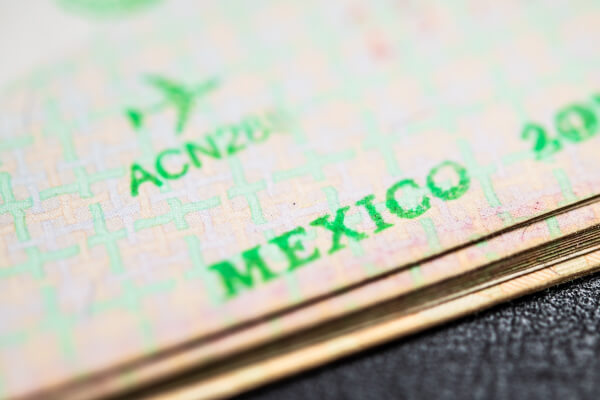Hiring Independent Contractors in Canada: A Complete Guide for Businesses
Learn how to hire independent contractors in Canada. Understand legal rules, tax responsibilities, and how to avoid misclassification with this guide.

Accounting cycle for a business indicates the process of recording every financial transactions in the company’s books of accounts from the time the transaction occurs to its ultimate presentation in financial statements.¹ Financial statements are important for any business as without them, you cannot plan your expenses, obtain loans or sell your business. Accounting cycle involves various steps while converting your raw financial data into meaningful financial statements.
In this article, we're going to explain bits and pieces of the accounting cycle which includes the following:
We'll also introduce a fast and secure global payment solution, Wise, to help you cut the cost on international payments and provide solutions in a few phases of the accounting cycle such as recording financial transactions and keeping track of all your local and international payments through an integration with Xero.
Let's get started!
This article will explain the basics of an accounting cycle in a simple and easy to understand manner. A transaction is recorded in Journal, classified in Ledgers, summarized in Trial Balance and presented in the form of financial statements for end users. A complete set of financial statements comprise of income statement, a balance sheet and a cash flow statement. Every year a company closes its books of accounts by following this procedure. Financial statements are prepared using a set of accounting principles and rules. These rules vary from region to region; however, the basic accounting principles remain the same.
There are 8 important steps in a complete accounting cycle.² The period of accounting cycle is usually one year.
First step in the accounting cycle is to gather relevant accounting records such as receipts, invoices, bank details, bank statements etc. for the current accounting period. All these transactions form the basis of the accounting cycle.
Second step is to record all the identified transactions in a book known as Journal. A Journal is a book in which each transaction is recorded by mentioning the date of the transaction, the description and the amount. Double entry is made in Journal which records both debit and credit sides of the transaction. The total debit side must equal the total credit side.
All the recorded transactions in Journal are then posted to Ledger accounts. A Ledger classifies journal entries into their respective account heads. For example, all the journal entries related to sales are classified into one ledger account by the name of Sales Account.
A trial balance is prepared taking unadjusted balance from all the Ledger Accounts. All the Ledger accounts may either have a debit balance or a credit balance. These debit and credit balances, however, must be equal to each other when shown in a trial balance.
In the fifth step, the accountant prepares a worksheet to make necessary adjusting and or correcting entries in order to match the two sides of the trial balance.
Adjusting entries are required in the sixth step in order to comply with accrual concept of accounting and to record depreciation. Also, any errors are rectified or any missing entries are recorded at this stage through appropriate journal entries.
In the seventh step, financial statements are prepared using the adjusted trial balance. Adjusted trial balance is the one that incorporates all the adjusting entries. A complete set of financial statements include an income statement, balance sheet and cash flow statement. An income statement is prepared using all the income and expense accounts. A balance sheet is prepared using the asset, liabilities and equity accounts. While, a cash flow statement is prepared using both the income statement and balance sheet accounts.
At the end of the cycle, the books of accounts are closed. Only income statement accounts are closed as they represent a specified period only. Balance sheet accounts are not closed as they give the details at a point in time. The closing report is used to analyze performance for a specified period of time. When the closing is complete, a new accounting cycle begins with the start of a new accounting period.
Learn more: Best Accounting Automation Software
If you’re using Xero as an accounting software, you can easily sync it with Wise multi-currency account. This keeps all your financial transactions in one place as you can use the account to receive, send and convert in 45+ different currencies. This means that you could receive and send funds to different countries locally and get rid of the receiving and intermediary fees most traditional banks charge. You can also take advantage of the mid-market rate without any hidden fees or mark-ups.
Wise Business can help you save big time on international payments.
Wise is not a bank, but a Money Services Business (MSB) provider and a smart alternative to banks. The Wise Business account is designed with international business in mind, and makes it easy to send, hold, and manage business funds in currencies.
Signing up to Wise Business allows access to BatchTransfer which you can use to pay up to 1000 invoices in one go. This is perfect for small businesses that are managing a global team, saving a ton of time and hassle when making payments.
Some key features of Wise Business include:
Mid-market rate: Get the mid-market exchange rate with no hidden fees on international transfers
Global Account: Send money to countries and hold multiple currencies, all in one place. You can also get major currency account details for a one-off fee to receive overseas payments like a local
Access to BatchTransfer: Pay up to 1000 invoices in one click. Save time, money, and stress when you make 1000 payments in one click with BatchTransfer payments. Access to BatchTransfer is free with a Wise Business account
Auto-conversions: Don't like the current currency exchange rate? Set your desired rate, and Wise sends the transfer the moment the rate is met
Free invoicing tool: Generate and send professional invoices
No minimum balance requirements or monthly fees: US-based businesses can open an account for free. Learn more about fees here
*Please see terms of use and product availability for your region or visit Wise fees and pricing for the most up to date pricing and fee information.
This publication is provided for general information purposes and does not constitute legal, tax or other professional advice from Wise Payments Limited or its subsidiaries and its affiliates, and it is not intended as a substitute for obtaining advice from a financial advisor or any other professional.
We make no representations, warranties or guarantees, whether expressed or implied, that the content in the publication is accurate, complete or up to date.

Learn how to hire independent contractors in Canada. Understand legal rules, tax responsibilities, and how to avoid misclassification with this guide.

Learn how to hire independent contractors in Brazil. Understand tax rules, compliance, contracts, and how to avoid misclassification risks.

Learn how to hire and pay independent contractors in Mexico. This article also includes an FAQ and best practices about working with contractors in Mexico.

Learn how to navigate the overseas worker recruitment. Discover legal requirements, sourcing strategies, visa compliance, and tips for international hiring.

Paying overseas vendors is common, but the hidden costs of B2B cross-border payments aren’t. Learn how to simplify international business payments today.

B2B payment processing doesn’t have to be hard. Learn how growing businesses can simplify cross-border transactions, streamline invoicing and get paid faster.